A Little Bit of Everything: Food & Beverage Startups
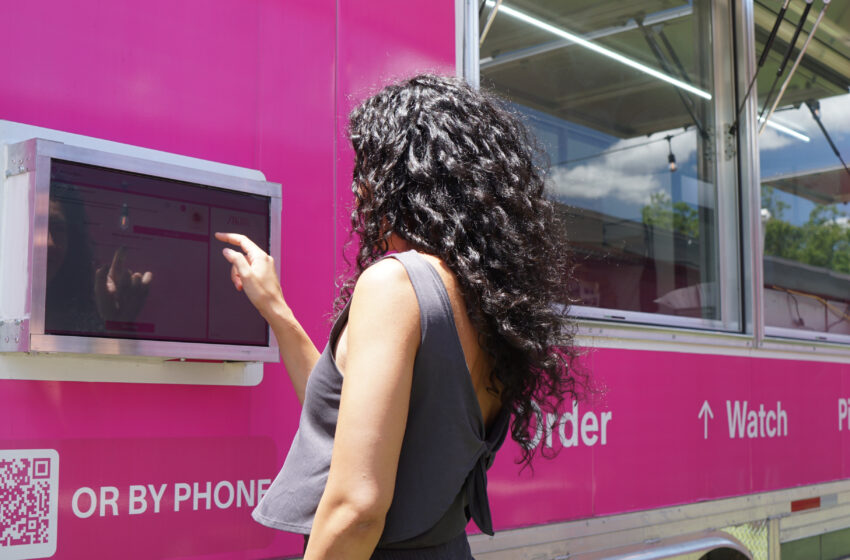
Food startups are growing in Texas as people are embracing entrepreneurship and following their passions more than ever, says CS Freeland, co-founder and executive director of the Austin Venture Association, which organizes venture capitalist (VC), accelerators, university incubators, corporates, growth equity, studios, angels, family offices, and other accredited investors.
Food is a big part of Texas culture, and Austin is a mecca for startups looking to make their stake. Austin has “a highly entrepreneurial ecosystem, meaning we have a pretty good concentration of consumer package goods [CPG] in the region,” she says.
There is a great deal of food industry innovation in the Austin area that encompasses “a little bit of everything”—grocery stores like H-E-B and Whole Foods Market with their own culture and affinity within the community. Also in the mix are ghost kitchens that help restaurants launch the market. “We’re leading in food trucks. Our farmers’ markets are great testing points for founders to get reach and consumer feedback. Even Texas gas stations are interesting, like 7 Ventures for 7-Eleven,” she says.
Of the prevalence of small food company startups, Charles Haseman, professor of practice in marketing and director of the Center for Retail Innovation and Strategic Excellence at The University of Texas at Dallas, says, “Coming off the impact of lockdowns, pandemic peaks, and the economy, we are seeing activity for startups.”
By definition, a food business includes the handling of food intended for sale or the sale of food. The most common food business outlets include:
- Fixed: physical building or location, such as cafes and restaurants.
- Mobile: food trailers, vans, and ice cream trucks.
- Temporary: food stalls, such as markets or events.
- Home occupation: low-risk cooking activity in a residential kitchen.
- Food transportation: transporting food, such as ingredients, to clients.
- Commercial kitchen: partially utilizing (such as a pre-arrangement with main leasee) a fixed building for a medium-risk cooking activity upgrading to operate from a commercial kitchen.
According to Haseman, data shows that despite there being thousands of food and beverage startups, there exists only a 10 percent success rate.
Food delivery has spiked since the pandemic-related lockdowns.
“It will be interesting how the economy impacts the growth,” he says. “Will we stay at the peaks or see a drop-off back to pre-COVID March 2020 levels?”
FINDING FUNDING
Funding for the food and beverage industry was on the rise in 2020. It had reached a new high with food and beverage companies raising $5.9 billion in equity funding in 2020, up 82 percent from $3.2 billion in 2019, reports CB Insights, which provides market intelligence on private companies and investor activities.
The report, released in February 2021, said the acceleration was viewed as a sign that the industry was working to diversify supply chains after the onset of the COVID-19 pandemic exposed weak spots in the food system.
Financing across the industry has focused on “sustainable food practices like alternative protein development and food waste prevention, reflecting increased consumer demand for sustainable and eco-conscious products,” the research firm indicates.
The majority of the most active investors in food and beverage over the past five years have been VC funds. Top investors by unique deal include AF Ventures, SOSV, CAVU Venture Partners, S2G Ventures, and Unovis Asset Management. Investors are backing companies across multiple segments working to create a more sustainable food system, led in deal volume by the alternative and sustainable proteins category (31 percent), packaged foods (27 percent), non-alcoholic beverages (21 percent), other (17 percent), and meal kits and delivery (4 percent).
ZIKI, an Austin-based fast casual Greek and Mexican fusion restaurant, recently closed its seed funding round, raising $6.7 million, with $5 million coming from Gigafund, known for putting more than $1 billion into SpaceX.
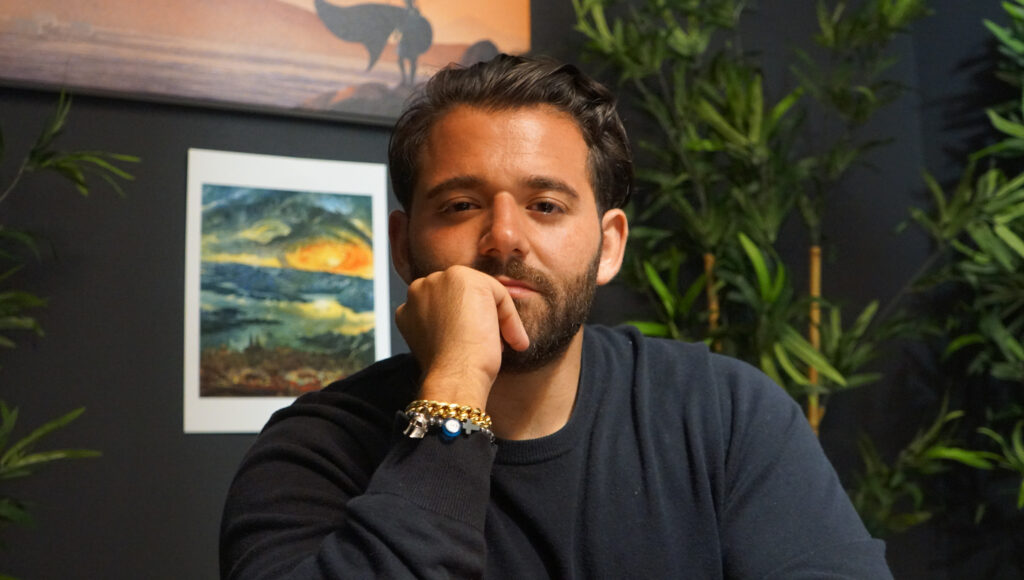
Since Gigafund is one of Musk’s core backers, it indicates that “Elon Musk sets the bar, and they won’t go near a company if they do not believe it will become one of the world’s most significant,” says Nicholas Nanakos, ZIKI founder and CEO.
Nanakos has been immersed in the restaurant industry since he was five, working with his grandfather, a Greek immigrant seeking to fulfill his dream to become a restaurant entrepreneur. Nanakos’ immediate and extended family operated several successful Greek restaurants called Tzatziki throughout the New York region, and he observed “the crazy high cost of time and capital with traditional brick and mortar.”
He knew he could do better.
He focused on restaurant unit economics and launched ZIKI with a new expansion model in mind: manufacturing modular restaurants from the company’s factory and operating the ZIKI brand out of them.
ZIKI touches a range of industries, Nanakos says, including food, brand, real estate, agriculture, manufacturing, supply chain, software, logistics, and technology as part of what he describes as a “large, global-scale, multi-decade conquest.” That includes re-thinking restaurants from the ground up, things like modularity, kitchen layout, windows, how the restaurant feels inside and outside, chef and ordering flow, how people order, and how they pick up.
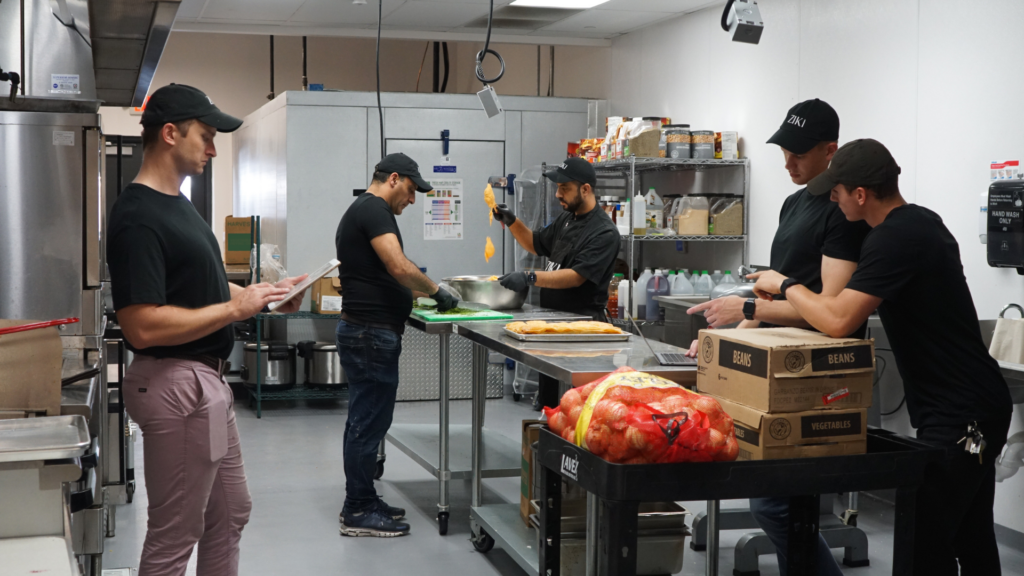
Nanakos’ team spent “an enormous amount of time on building scalable systems, making key hires, wise investments, and as a result we have seen explosive growth across every aspect of the business.”
To that point, his team has been a driving factor in ZIKI’s success to date.
“I have a remarkable team around me that serves as enormous inspiration, bringing the vision closer every day,” he says. “ZIKI is on path to become the fastest-growing restaurant company on the planet, and the most significant company to ever exist in food.”
While ZIKI is currently “hyper-focused” on the Austin market, Nanakos says, plans call for expansion into new markets.
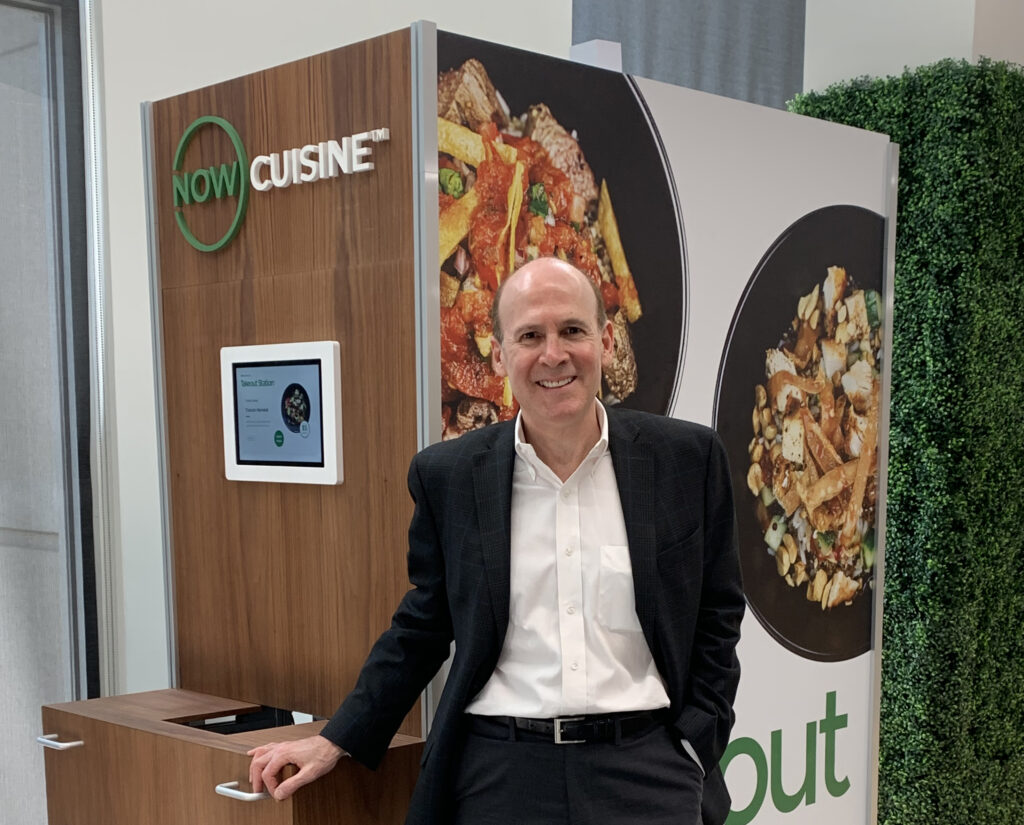
Another Texas entrepreneur, Adam Lloyd Cohen, is founder and CEO of Now Cuisine, the first highly scalable restaurant that is an AI-enabled robotic “restaurant-in-a-box” kiosk. It exists as a decentralized sales, fulfillment, and marketing platform for restaurant brands, allowing them to scale “incredibly fast, become ubiquitous, and operate 24/7,” he says.
Now Cuisine kiosks are stocked with fresh ingredients to rapidly make-to-order healthy, delicious, fully customized hot and cold meals such as burrito bowls, Mediterranean bowls, grain bowls, and breakfast bowls, among other options. The kiosks can be placed in an office or multifamily building, hotel, hospital, or college campus to provide people with a dining option “that’s faster and more affordable than delivery, and far more convenient than driving to a restaurant,” Cohen says.
The plan for Now Cuisine is to initially roll out commercial kiosks in Dallas/Fort Worth and perhaps Austin and grow first within Texas before expanding to other states.
Now Cuisine has been mostly self-funded to date, although the company has brought in some angel funding. “We’ve focused less on fundraising than on preparing the company for fundraising, including putting together the right team, demonstrating the technology in public, and establishing traction with customers through partnership agreements and purchase orders, such as with Freebirds World Burrito, and letters of interest or intent [LOIs],” Cohen says.
“We’re in the process of building relationships with investors that may be great fits, and then will begin raising our first major funding round.”
He points out there are inherent hurdles.
“There are quite a few investors, which may be ‛allergic’ to companies like ourselves that are hardware-enabled,” Cohen says. “Some of these only fund startups whose offering is purely software.”
Cohen believes his company’s approach overcomes most of those concerns in that Now Cuisine uses a robotics-as-a-service (RaaS) model, with recurring revenue and high projected margins comparable to software companies.
“Our machines are designed for cost-effective production in high volume,” he adds. “We won’t be producing the machines ourselves—rather, we design them and develop the associated software.”
Now Cuisine will use lease financing rather than pure equity to fund most capital expenditures. “Unlike most software companies, we have IP that differentiates us and creates a competitive barrier to entry,” Cohen says.
Additionally, “having a physical presence among potential customers, such as people working in an office building, makes for a very visible and ’sticky’ offering, compared to a business whose only presence to the consumer is virtual/online and merely one of thousands of others,” he adds.
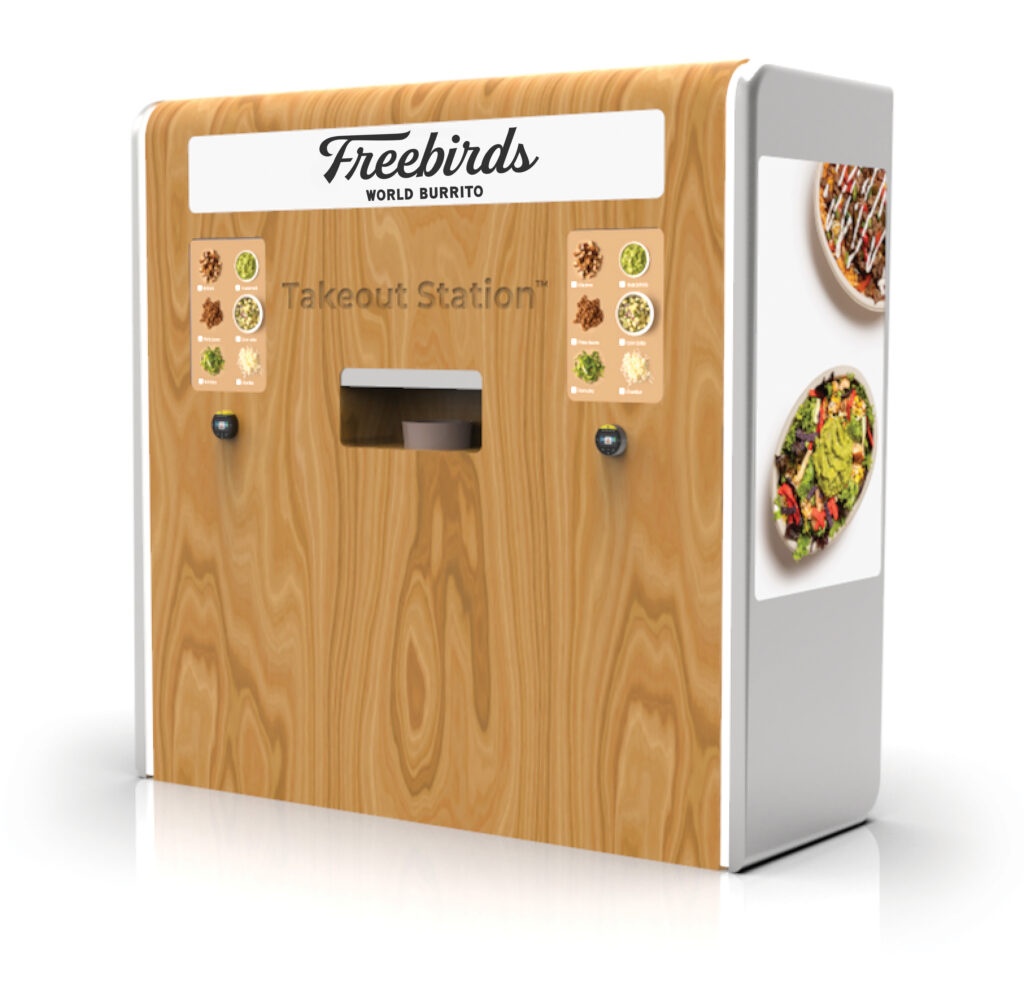
Successes to date have included establishing a strategic partnership/purchase order for a pilot with Freebirds, the number-two burrito chain in Texas, Cohen says. Additionally, Now Cuisine has received signed LOIs for piloting kiosks with a major real estate-related company with nearly 9,000 locations and LOIs for pilots with a major Mediterranean chain, among others.
Now Cuisine has also brought in Charles Studor, “an amazing CTO and the pioneer of robotic foodservice kiosks,” Cohen says. Studor had been founder and chief technology officer of Briggo Inc., which introduced the first fully autonomous, remote order and pay robotic barista in 2011, acquired by Coca-Cola/Costa Coffee.
Other measures include partnering with highly experienced hardware engineering/manufacturing and software firms that built foodservice robotics and creating a seven-member advisory board with expertise ranging from restaurants to business development, and from robotics to IP, Cohen says.
Now Cuisine has run a successful public beta with a first-generation robotic kiosk. “It proved our technology, excellent food quality, and enthusiastic consumer response,” Cohen says.
WHAT MATTERS MOST
“Any investor always looks at the team’s capability, and if they show progress,” Freeland says about a food and beverage startup. “Obviously, the product has to be novel and either ahead of the taste buds for the mass population or a new take on branding. Healthy options are what the more educated consumer wants and needs.”
As for venture capital firms, “one of the main things they look at is the founder,” says Emily Kealey, managing director for SKU, an Austin-based consumer products accelerator with SKU accelerators in Dallas, Atlanta, New York, and Minneapolis as well. “Do they have what it takes to grow their business? Do they understand their strengths and weaknesses?
“They also want to see an innovative product in a hot category. Is it just a me-too sparkling water or does it have flavors and branding that make it stand out?”
The founder and brand’s story matters as well.
“If there’s a story there in a hot category, that’s when it gets exciting,” Kealey says, “but story can only get you so far.” A VC firm wants to see category traction and velocity and revenue growth with healthy margins, she adds. “It’s not enough to have rising sales if your margins are too low to make a profit.”
The management team, business concept and plan, market opportunity, and risk judgement with heavy review of customer and product excitement and innovation are the factors a venture capital firm seeks in funding a food-and-beverage company startup, Haseman says. The basic funding process starts with an opportunity introduction, followed by an initial screening, due diligence, and funding negotiations.
“There’s an extreme focus on customer experience and innovation,” Haseman says.
THE PITCH
For a startup looking to pitch to a VC firm, Cohen recommends that entrepreneurs:
- Do the homework: understand customer needs, unit economics, manufacturing if applicable, and test the product.
- Assemble a team with the right background.
“A really great founder story, especially in CPG startups, always allows a potential investor to make a connection, understand the need, and/or really feel the product in an impactful way,” Freeland adds.
“As with any startup, you want to highlight why you’re different, why things are changing, know your numbers, and have solid projections,” she says. “I might even recommend watching Shark Tank as those are more consumer-type companies that get tons of questions and in general, perspective of what that experience would be like.”
“Tell a story. A pitch should open with something relatable about why you’re passionate about the opportunity or why others should be.”
Charles Haeman
From an execution perspective, a startup pitch deck must be focused, intriguing, and credible, Haseman says. “Tell a story. A pitch should open with something relatable about why you’re passionate about the opportunity or why others should be.”
Good investors appreciate authenticity, Nanakos says. “I never changed my style to appease a specific investor. For example, if I knew a specific investor was particularly versed or focused on SaaS, I did not try to pitch myself or the company as SaaS.
“I remained raw, authentic, true to my vision, with my own opinions. Be honest, bold, and confident. Confidence comes from knowing your business better than anyone and outworking your competition while they sleep.”
One best practice is to “know your numbers inside and out,” Kealey says. “What’s your velocity? What are your margins? What is your COGS [cost of goods sold]? What are your terms with your copacker if you have one?
“Get your deck and visuals branded and the content tight,” she adds. “What you say verbally should complement visually what’s on your deck. The title of each slide if taken out and stitched together should give an outline like a table of contents for your story and your brand.”
Kealey recommends finding a friend or family member with whom to practice a pitch. “Get as many people to grill you on as many things as they can so you can be prepared.
“Also, be prepared to be told no a lot and know that’s okay,” Kealey says. “This goes back to looking at the founder first. Do they have tenacity? Being told no is hard, but you have to keep going.”
Rejection had been his greatest challenge in starting ZIKI, Nanakos says. Entrepreneurs should understand that the fundraising process is an art of storytelling to be mastered through repetition.
Each “no” he received—and there were more than 100—brought him closer to a “yes.”
“Each conversation forced me to sharpen my narrative and see things through an enhanced lens,” he says.
“Another key point is that the founder-investor relationship is a two-way street. Oftentimes, founders see it through the scope of ‘I need their investment.’ If you’re that good, remember that while this may be true, they need your company as well. Find alignment of values and vision within the investors you meet.”
In Nanakos’ experience, the best investors act on intuition and conviction and trust the founder to get the job done regardless of what the path of getting there looks like.
A RESOURCE-RICH ENVIRONMENT
Business incubators and accelerators provide startups with tools, expertise, and targeted financial assistance to launch and grow. There are 1,400 incubators and 500 accelerators in the US according to the International Business Innovation Association.
A business accelerator provides startups with resources and support to help launch their growth, such as access to expert mentors, funding and investors, peer mentorship, workspaces, and marketing technology. Significant factors of a business accelerator include fixed duration, growth-based approach, seminar-based education, an intense mentorship model, and a competitive and cyclical selection process. An accelerator uses set cohorts of businesses and may help with assembling a board of directors. The company provides an accelerator’s investors with equity.
A business incubator helps new startups refine and build from the idea stage, assisting with management training, office space, and venture capital funding. It is differentiated from an accelerator in that it has an open-ended duration, is fee-based, does not take equity, educates when necessary, and has a minimal but tactical mentorship model.
The incubator is based on a non-competitive selection process. It is done at the earliest stages of business development. Incubators often provide access to the resources needed to launch a business, Haseman says. “This may include office space and equipment, utilities (including internet service) and discounted or free professional services, such as accounting and legal help.”
Eighty-five percent of companies that have gone through SKU
are still in business and generate more than $5 billion in annual sales
Emily Kealey
They are usually nonprofit organizations, often associated with universities, such as the University of Texas at Dallas and business schools that extend invitations to students and alumni to take advantage of the program, he adds.
Sometimes a food startup with enough traction and promise can—after some level of bootstrapping—go through incubators or accelerators, such as SKU, which started in Austin, Freeland says.
“There, they receive education and get some mentorship about a variety of aspects of the business tailored to their situation,” she says. “Investors—or at least potential investors—and even lawyers can guide the founder through the process. I know some corporations have a venture or accelerator program such as 7-Eleven and Whole Foods, respectively, and that can really help with distribution.”
According to the Grocery Manufacturers Association, one in 10 jobs is in CPG.
“These small emerging brands in Texas have exploded over the past 10 years—think Siete, a SKU alum, to Yeti,” Kealey says. “Through groups like SKU, Naturally Austin, and DFW CPG, there are a number of resources to founders to help them grow their brands.”
Eighty-five percent of companies that have gone through SKU—many of them based in Austin—are still in business and generate more than $5 billion in annual sales,” Kealey says.
Other statistics show that the CPG industry provides 1.7 million jobs, of which 145,000 is direct employment; $87.7 billion in total income, of which $7.9 billion is direct labor income; and $159.7 billion GDP contribution, of which $19.3 billion is direct value added, according to the Consumer Brands Association.
“We’re seeing a wide range of categories, including plant-based chicken, functional beverages, and beauty products,” Kealey says. “Nearly each has comprehensive channel strategies, including wholesale club stores like Costco, supermarket chains, e-commerce/Amazon to food service.”
As an accelerator, the three phases of the SKU experience start with the application and onboarding process.
“What can feel similar to a VC firm experience, when you apply, you might be told to come back when your margins or revenue are at X,” Kealey says. “We’ve seen many times a company apply one year, not make it, and turn around the next year and get selected.
“Once selected, you are onboarded with the SKU crew and meet your group of hand-picked mentors that are there to meet you and your company’s unique needs for the duration of the track and beyond,” she adds. “Our mentors are truly the secret sauce to our founders’ success.”
The SKU process also entails a 12-week course, which focuses on everything from mission and vision to channel strategy to learning the ins and outs of fundraising. It culminates in a virtual showcase day where each brand gets to present its company to the “who’s who” in the CPG industry. Beyond that, SKU offers ongoing support from a mentor team and SKU crew as well as Continuing Founder Education, which is educational programming.
“We want to ensure our alumni are taken care of years after their track has ended,” Kealey says.
In mitigating his challenges, Nanakos says, money was not his primary focus—whether he needed it or not. “My main priorities were momentum and execution. The results will speak for themselves. Your progress becomes undeniable, and fundraising becomes easier. While I was excited to have conversations with potential investors, I had zero expectations.
“I understood the time would come when we would get lucky,” he says, “but I also understand that luck is just when preparation meets opportunity.”


